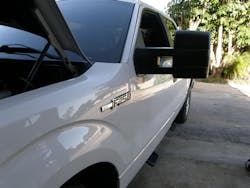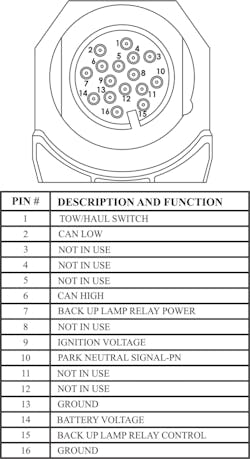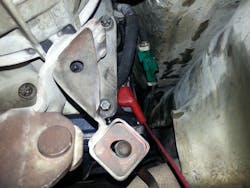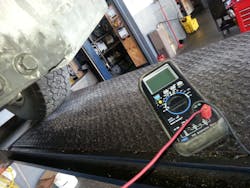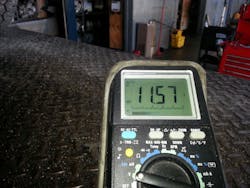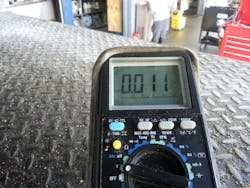Several points were brought up in a seminar presented at the Automechanika Chicago show in April about the frustrations that come with diagnosing transmission concerns. To determine if the cause of a malfunction is related to an engine management problem, an ABS issue or an actual transmission malfunction can be at times quite challenging. If the malfunction has been determined to be a transmission problem, the next step typically is to decide if it is a minor or major repair. Of course it is always nice when a cause to a problem has been discovered and is passed along to others saving them the grief it took to resolve it.
Through many years of experience diagnosing transmission concerns in shops and on ATSG’s technical help line, a general diagnostic approach has been developed to find that silver bullet as quickly as possible. The list begins with “Information,” meaning we look first to see if there are any bulletins or articles already covering the subject. The available diagnostic equipment as well as the ability to use the equipment is considered if handling the problem over the phone.
A simple example of this was a call we took from a shop that decided to put its toe in the water to fix a CVT transmission for the first time. It was a 2007 Nissan Altima that arrived to the repair facility with a vehicle speed sensor code P1722. The shop had diagnosed it down to a problem with the tone ring and wheel bearing rather quickly. After repairs the code was cleared and they drove the vehicle. All was perfect for the exception of an approximate five-second delay into gear, both forward and reverse. Once engaged, the transmission drove flawlessly (as far as a CVT is concerned).
This particular CVT utilizes a torque converter allowing a forward or reverse clutch to apply like any other conventional transmission. This means all that is required to engage the clutch is to move the manual valve into the Drive or Reverse position. A select control valve in the valve body would then control the engagement of the clutch. Not only is the intention of the select control valve's function to provide a nice comfortable garage shift into gear, it primarily is used to prevent a damaging jolt to the drive pulley assembly.
For this reason the shop checked the manual valve adjustment and the transmission range sensor signal, which proved to be in order. The valve body was then removed to inspect the condition of the assembly and particularly the select control valve. In the process they noticed the fluid was still in good condition and the pan was fairly clean. The disassembly and inspection of the valve body revealed nothing. With the valve body removed, they checked the apply of the forward and reverse clutch with some compressed air and they applied nicely. So it all went back together with the sense that the transmission was in good shape.
A delayed engagement into gear is somewhat of a fairly common call with this transmission, as it could have a two- to three-second delay and is considered normal. As much of a nuisance this slight delay might be, it is the result of the way the select control valve operates. But a lengthier delay is a problem and ATSG knew of a bulletin by Nissan that identifies specific Transmission Control Modules that have this problem (NTB 10-147). If the vehicle in question contains a TCM part number listed in the bulletin, there is a reprogramming procedure to fix the delayed engagement problem. Again, it is a simple example of trying to fix something only programming can fix. The bigger problem is a malfunction due to a programming problem without a reprogramming procedure available to resolve it. Unfortunately, this type of situation is on the rise beginning with some 6-speed automatic transmissions and increasing with some 8- and 9-speed transmissions.
With shops being faced with such a dilemma, it becomes all the more important to have some form of an organized diagnostic routine as previously mentioned in an attempt to nail down a possible programming problem. Admittedly this at times will take skill, equipment and time that might be difficult to bill.
Sometimes programming problems can be quick to determine, such as an incidentThe Tow/Haul feature delays up-shifts to reduce frequency of transmission shifting and provides engine braking in all forward gears when the selector lever is in the (D) position.
The Tow/Haul switch is a momentary contact switch, which when depressed will illuminate the words TOW HAUL in the Instrument Cluster indicating the strategy has been activated. Just press the button again to turn the light and strategy off. All of this was working yet the delayed shifts and engine breaking were not present.
The computer for this transmission is located inside the transmission. MY 2010 Ford trucks with 6.7L engines have the TCM mounted externally. MY 2010 4.6L and 5.4L applications have the TCM inside the transmission. In 2011, the TCM is external for 3.7L, 5.0L and 6.2L applications. This has caused quite a bit of confusion when looking for accurate wiring information.
Another area of frustration can at times be related to aftermarket tuners designed to enhance engine performance. This does not come up too often, so when it does it can be elusive since it is not in the forefront of one’s thinking. We had experienced tuners burning out 6-speed Aisin Seiki transmissions in Dodge diesel incomplete chassis applications as it blocked shift adaptations. We now are seeing overdrive clutch burnout with the 68RFE transmission behind diesel engines even when you tell the tuner to return to street settings.
Many new Dodge and Jeep vehicles now have 8- and 9-speed transmissions experiencing programming issues affecting transmission function. Someone who I know personally purchased a 2015 Jeep Rubicon with a 9-speed transmission that went down in 1,500 miles. After a new transmission and reprogramming, it now takes off in third gear and he has to go down a hill doing 60 mph for it to finally shift into ninth gear.
An interesting article concerning the front wheel drive version of the transmission appeared in the Feb. 16, 2015, issue of Automotive News entitled “Honda to offer ZF 9 speed in Pilot” by Lindsay Chappell. A quote from this article reads, “Fiat Chrysler officials said last month that they were making software improvements to address some complaints about the transmission's performance.” This transmission is also in the Acura TLX and MDX.
I think I said previously that nothing can be more frustrating than trying to fix a problem that can only be achieved via reprogramming. I need to correct myself. Nothing can be more frustrating then trying to fix a problem that cannot be fixed. Hopefully many of the programming issues will be resolved before they come into shops for repair once out of their warranty period.
